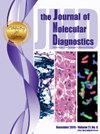A Perspective on Artificial Intelligence for Molecular Pathologists
IF 3.4
3区 医学
Q1 PATHOLOGY
引用次数: 0
Abstract
The widespread adoption of next-generation sequencing technology in molecular pathology has enabled us to interrogate the genome as never before. The huge quantities of data generated by sequencing, the enormous complexity of human and microbial genetics, and the need for fast answers demand increasing use of automation as we diagnose disease and guide patient treatment. Much of this automation is based on tools that fall under umbrellas that have come to be known as machine learning and artificial intelligence. This review outlines some of the broad ideas that underpin these complex computational methods. It discusses the roles of pathologists and data scientists in generating new tools and factors to keep in mind when adopting these systems for use in molecular pathology. It pays special attention to regulatory and professional society guidance for validating them in individual institutions and to possible sources of bias. Finally, it briefly discusses ongoing efforts in computer science that may dramatically impact artificial intelligence in the future.
分子病理学家对人工智能的展望。
下一代测序技术在分子病理学中的广泛应用,使我们能够前所未有地对基因组进行研究。测序产生的海量数据、人类和微生物遗传学的巨大复杂性以及对快速答案的需求,都要求我们在诊断疾病和指导患者治疗时越来越多地使用自动化手段。这种自动化大多基于机器学习和人工智能(AI)工具。在这篇综述中,我们将概述支撑这些复杂计算方法的一些广泛理念。我们讨论了病理学家和数据科学家在创建新工具中的作用,以及在分子病理学中采用这些系统时应注意的因素。我们还特别关注了在个别机构中验证这些系统的监管和专业协会指导,以及可能的偏差来源。最后,我们简要讨论了计算机科学领域正在进行的努力,这些努力可能会在未来对人工智能产生重大影响。
本文章由计算机程序翻译,如有差异,请以英文原文为准。
求助全文
约1分钟内获得全文
求助全文
来源期刊
CiteScore
8.10
自引率
2.40%
发文量
143
审稿时长
43 days
期刊介绍:
The Journal of Molecular Diagnostics, the official publication of the Association for Molecular Pathology (AMP), co-owned by the American Society for Investigative Pathology (ASIP), seeks to publish high quality original papers on scientific advances in the translation and validation of molecular discoveries in medicine into the clinical diagnostic setting, and the description and application of technological advances in the field of molecular diagnostic medicine. The editors welcome for review articles that contain: novel discoveries or clinicopathologic correlations including studies in oncology, infectious diseases, inherited diseases, predisposition to disease, clinical informatics, or the description of polymorphisms linked to disease states or normal variations; the application of diagnostic methodologies in clinical trials; or the development of new or improved molecular methods which may be applied to diagnosis or monitoring of disease or disease predisposition.

 求助内容:
求助内容: 应助结果提醒方式:
应助结果提醒方式:


